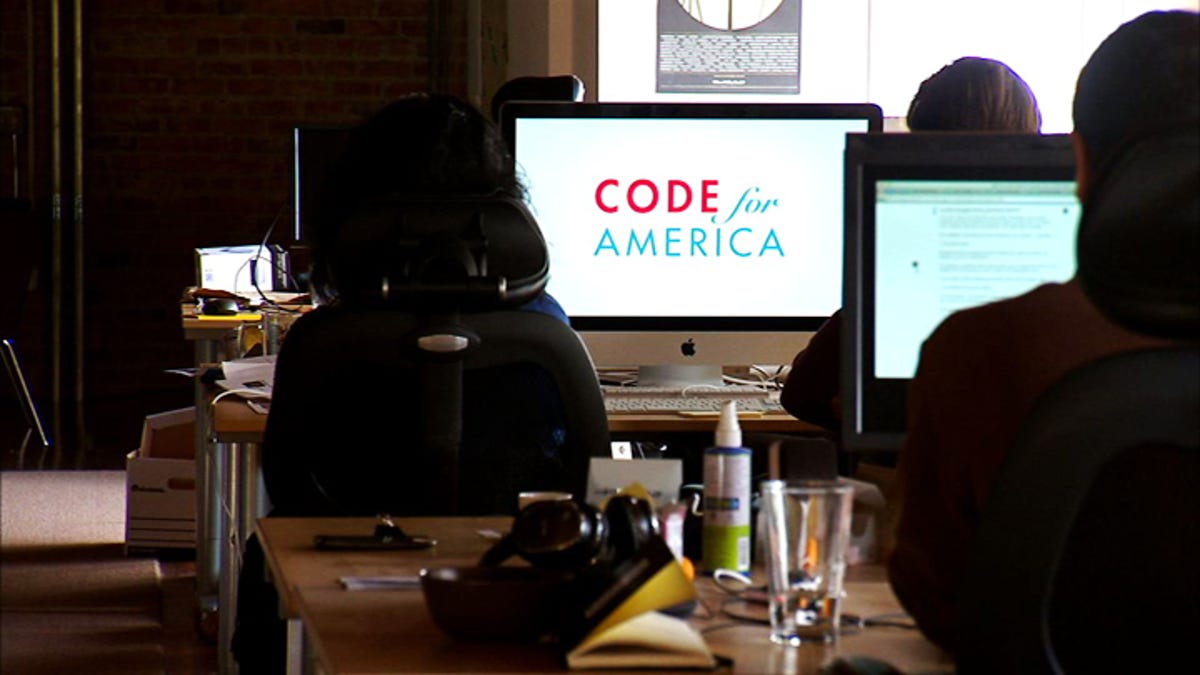How Code for America upgrades local government
Frequently described as a Peace Corps for geeks, Code for America pairs highly skilled Web developers and entrepreneurs with cities in need of high-tech help.

Is there any greater test of one's patience than dealing with local government? Whether waiting in line at the DMV, applying for a building permit, or fighting a parking ticket, I'm always left wondering why there isn't an app for that. Now cities are getting a high-tech boost thanks to Code for America, a nonprofit organization founded by Jennifer Pahlka.
Since 2011, Code for America has awarded fellowships to a carefully chosen group of tech professionals and paired them with cities across the U.S. that are looking to improve the way their government is run, whether it's clearing hydrants of snow after a blizzard, or helping families find the right public school for their children.
The fellows range from Web developers to designers and entrepreneurs. The program is a yearlong commitment, and fellows are paid a stipend of $35,000 -- a fraction of what they're likely earning in the tech industry. Still, competition has become fierce. For 2013, Code for America received 550 applications for 28 spots. Pahlka said applicants can't get by on technical skills alone:
People come to do this program because they care, because they feel like they can make a big difference in a year and that they can leave knowing that they've helped their country run better and frankly leave with some stories that will inspire others to do the same. So the skills are important, but the passion has to be there, too.
That's what drew Jacob Solomon to the program. Prior to becoming a fellow, he worked in health care public policy research at the RAND Corp. But he was frustrated by the laborious process of applying for research grants. "You apply for funding. You get money. A year later you do a four-year experiment. You wait a year for results. You publish a year later," Solomon said. "So it's like eight years from idea to any output in the world." He learned about Code for America while attending the 2011 TedMed conference. He explained, "I had cornered a guy named Aneesh Chopra who was federal CTO at the time and basically said, 'Here's what I'm doing. I'm bored. Thoughts?' And he was the one who initially referred me to Code for America."
Solomon now works alongside three other Code for America fellows. Together they're trying to make it easier for San Francisco residents to enroll in benefits offered by the city's Human Services Agency -- services like MediCal, food assistance programs, shelter systems, and employment resources.
Three months in, the experience has been both intense and eye-opening. "I would say the fellowship so far has really changed my view of where the opportunities to improve the world are," Solomon said thoughtfully.
Each team of fellows spends about a month in the partnering city getting what Pahlka describes as a 360-degree view of the problem (thus, hopefully ensuring they don't solve the wrong issue). The remainder of the year is spent at Code for America's headquarters in San Francisco, collaborating with their team, building, and then -- with input from the city -- finessing.
"Typically, they'll have what we call a minimal viable product up and running about six to eight weeks later," Pahlka said. "That's pretty aggressive, and it doesn't meant that it's a perfect product. But it means that it is something that we can then learn from, and that's the point. They're not trying to ship a product by the end of the year...because then it's not informed by the actual people who are going to be benefiting from it. So they get it out really early, and they use it as a tool for learning and iterating."
The hope is that these products can also be used by other cities elsewhere in the U.S. -- and it means that local governments can enjoy a Silicon Valley-style upgrade.

